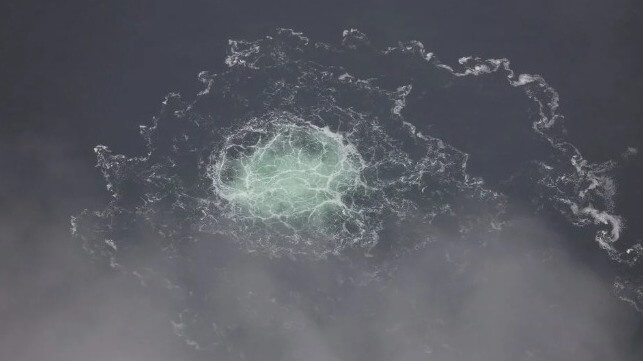After Nord Stream Attack, Europe Scrambles to Secure Subsea Pipelines

When a suspected sabotage attack ruptured the Nord Stream 1 and 2 lines on Sept. 26, several hundred thousand tonnes of Russian natural gas was released into the atmosphere. As it evaporated into the air, so too did any sense of complacency about security in the deep. European nations are now taking extra steps to protect their vulnerable subsea pipelines: The UK is planning to buy two special-purpose ships to survey and defend against subsea threats; Norway has deployed additional naval assets to patrol its sprawling offshore oil and gas infrastructure; and the Italian Navy has dispatched ships to monitor gas pipelines in the Mediterranean.
The identity of the attacker is not yet known for certain, but several NATO member states have hinted or stated that they believe Russia to be the culprit - even though the Russian government was the majority owner of the pipeline and most of the gas.
“Our internet and our energy are highly reliant on pipelines and cables. Russia makes no secret of its ability to target such infrastructure,” UK defense minister Ben Wallace said on Sunday.
To better defend UK interests under the sea, Wallace announced, the British government has "recently committed to two specialist ships with the capability to keep our cables and pipelines safe."
“The first multi-role survey ship for seabed warfare will be purchased by the end of this year, fitted out here in the UK and then operational before the end of next year," he said. “The second ship will be built in the UK and we will plan to make sure it covers all our vulnerabilities.”
In Italy, the ministry of defense has called for the country's navy to conduct subsea inspections with ROVs near key infrastructure - especially the Transmed pipeline infrastructure, which transports gas from northern Africa. There are three gas pipelines between Italy and Sicily, and two vessels have been assigned to survey them.
"Since yesterday the Navy patrols in the Sicilian channel has doubled, there will be checks on the pipelines that are located in the seabed," said Chief of Staff of Defense Adm. Giuseppe Cavo Dragone, speaking to La Repubblica. “We have been aware of this threat for years. When I was at the top of the navy I spoke about it in the hearings in parliament. We have prepared ourselves to face it."
In the North Sea and Norwegian Sea, the Norwegian Navy has stepped up patrol operations around offshore oil and gas infrastructure. Operators on the Norwegian shelf have reported unusual drone activity near six different platforms, and the pilots' union for helicopters serving Norway's offshore sector has called for military support to ensure flight safety. "With the right technical equipment, for example from a military vessel, the drone can be tracked, the flight route mapped and the authorities can thus find out where it is coming from with the help of advanced technology," said union deputy chairman Carl Gilbert Rego, speaking to NTB.
Norway also faces a known threat to its subsea communications cable infrastructure: earlier this year, unspecified actors damaged a cable between Norway and Svalbard. This particular cable is important because it is the data pipeline for the world's biggest commercial satcom ground station, SvalSat, which provides downlink support for satellites on polar orbits.
